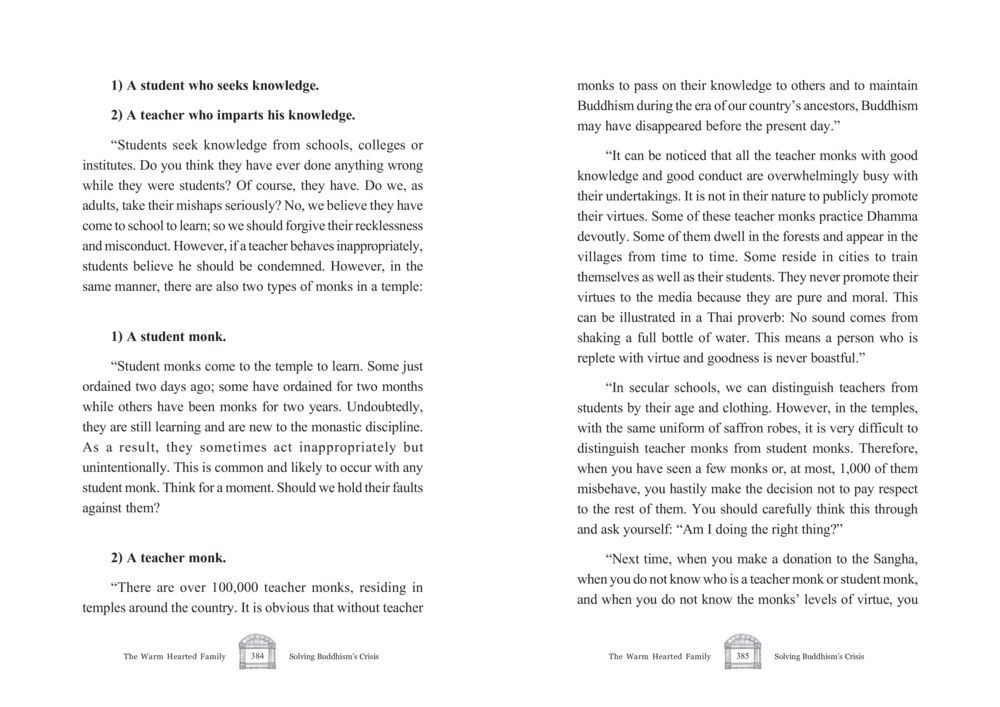Understanding the Roles of Students and Teachers in Monastic Life : หน้า 193/207
The Warm Hearted Family : หน้า 193/207 Explore the parallels between secular education and monastic life, focusing on the importance of both student and teacher monks in Buddhism.
0 ครั้ง

สรุปเนื้อหา
Students and teacher monks share the journey of learning and self-improvement within the monastic community. Just as students in secular schools may err in their behavior, student monks, regardless of their duration of ordination, are still navigating the complexities of monastic discipline. Society tends to be lenient toward students' mistakes, yet holds teachers to a higher standard. This disparity raises questions about our expectations. Teacher monks, numbering over 100,000, play a pivotal role in preserving Buddhism, often living modestly without seeking recognition for their virtuous lives. The proverb, 'No sound comes from shaking a full bottle of water,' exemplifies their humility. In contrast, the challenges of identifying the roles of monks based purely on uniformity—saffron robes—can lead to premature judgments about their character. Thoughtful consideration is encouraged before forming opinions, especially when supporting the Sangha. By recognizing the learning journey of all monks, we can foster compassion and understanding within the community.
หัวข้อประเด็น
-Role of students in monastic life
-Role of teachers in Buddhism
-Importance of compassion in education
-Lessons from Buddhist teachings
-Understanding monk's behavior and virtue
ข้อความต้นฉบับในหน้า
หน้าหนังสือทั้งหมด















































































































































































































